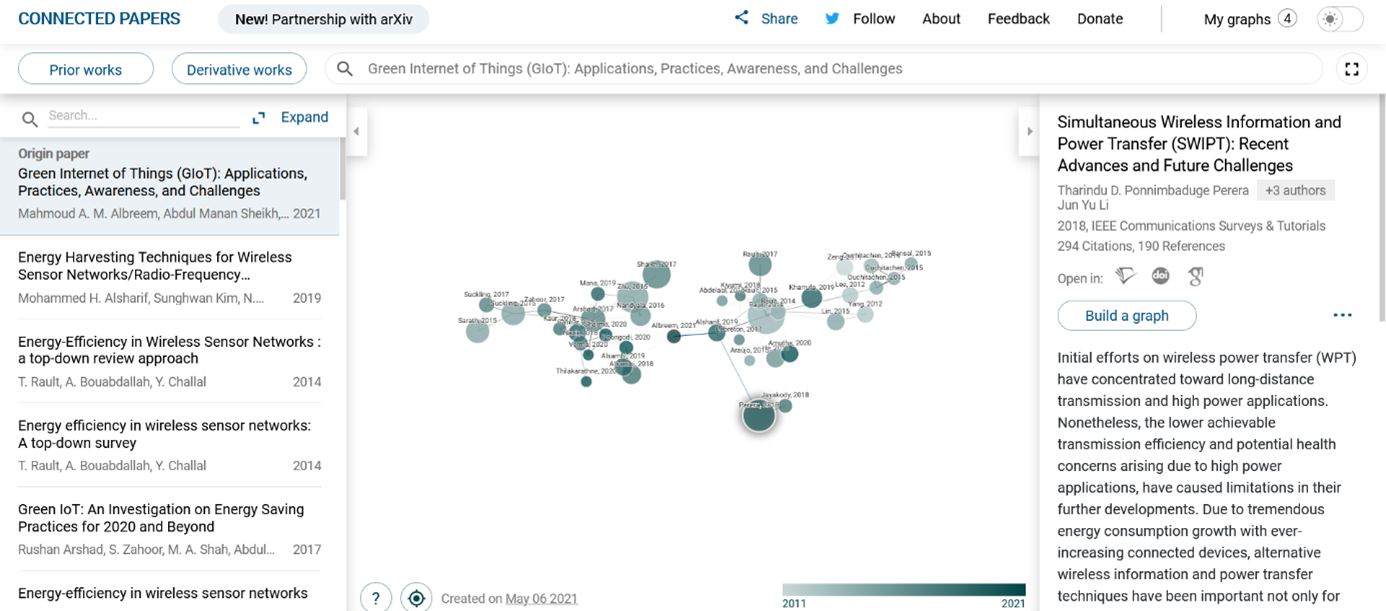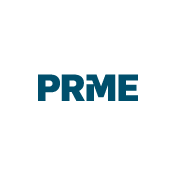Cool Tool: Connected Papers
In our video course "Effectively searching for literature", you learnt that it is important to use different search terms that describe your topic as precisely as possible. We also recommended a "snowball search", where you used keywords from similar sources to find further literature.
Connected Papers takes a different approach: based on your input paper, the tool generates a graph which clusters thematically similar papers:
The marked point symbolises the source document. The closer the dots are to each other, the greater the similarity in topic. The strength of the lines also indicates the similarities between the papers. The more recent papers are shaded darker and the size of the dots show how often the papers have been cited by others.

You can create a visualisation for every article in the graph by selecting it and clicking "Open graph". You can find the specific bibliographical data for each article in the listing on the left, and these can be exported into Citavi or another literature management software by clicking "Expand" and then "Download".
The function "Prior works" lists the works from earlier publication years that were most frequently cited by the papers from the graph. This could be an indicator of particularly influential sources. If you click on the "Derivative works" button, you will see more recent papers that use many of the papers from the graph as references. These could be important recent papers or surveys.

The algorithm behind Connected Papers does not simply list the sources from the bibliography of an individual paper. Instead, it identifies which papers - from a multidisciplinary pool of over 50,000 documents - have overlapping citations and references and creates a graph from these metrics. This allows you to find essays that use the same sources but do not cite each other.
Connected Papers can help you to find literature that you might not have found when just using keywords or bibliographies, which also reduces the risk of overlooking important literature. This is particularly beneficial when writing a literature review - the "prior works" function can help you identify relevant foundational literature, and "derivative works" can help identify the newest publications.
Connected Papers can also provide new ideas and research approaches when you discover surprising references to other disciplines - in this way, you can also learn about new topics and illuminate the dynamic development of publications.
Connected Papers works most reliably with science papers, but don't hesitate to test it out with topics from other disciplines as well!
Do you have questions about searching for literature? Then get in touch!




